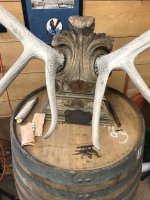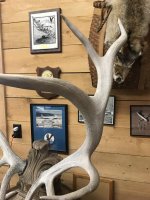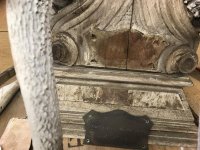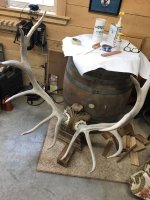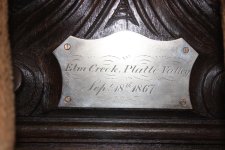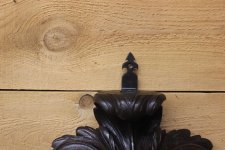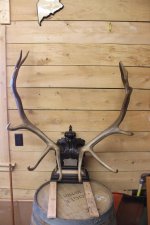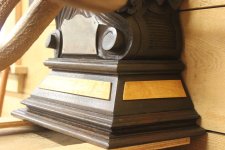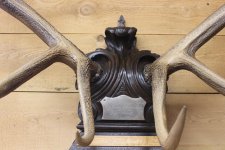These antlers were hanging on the wall of a covered veranda at a friend's Adirondack lodge for many decades. We don't know when the mount arrived in the Adirondacks or who shot the elk. All we do know is what we have on the engraved and nickel plated plaque. It took approximately forty man hours (my brother and I work slow) to restore this mount for our friend. The base is carved walnut with bird's eye maple veneer.
My best guess is that this elk was shot by a wealthy individual, who perhaps arrived in the Kearney area by train. I think the tracks reached that part of Nebraska in early 1867? I'm also guessing that the rack was brought East and the mounting done by a carver/furniture maker of German descent. It reminds me of the Black Forest style of carving.
By 1867 most of the overland wagon migration through the Elm Creek area was over. But maybe one of the historians of the Oregon Trail Association has some journal entries from folks back then that would shed more light on who may have shot this elk. I may try to reach out to them or the historical society of Elm Creek and Kearney.
My best guess is that this elk was shot by a wealthy individual, who perhaps arrived in the Kearney area by train. I think the tracks reached that part of Nebraska in early 1867? I'm also guessing that the rack was brought East and the mounting done by a carver/furniture maker of German descent. It reminds me of the Black Forest style of carving.
By 1867 most of the overland wagon migration through the Elm Creek area was over. But maybe one of the historians of the Oregon Trail Association has some journal entries from folks back then that would shed more light on who may have shot this elk. I may try to reach out to them or the historical society of Elm Creek and Kearney.

